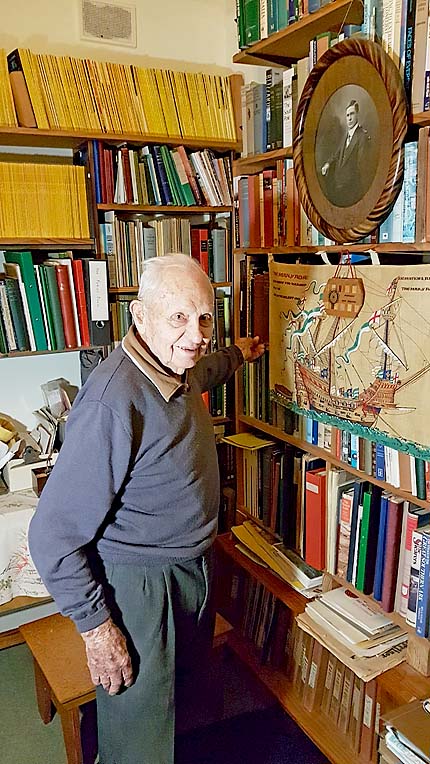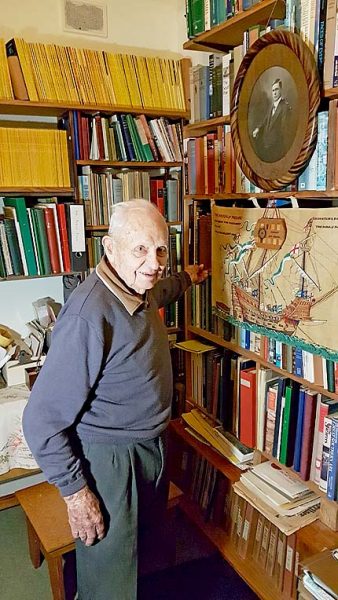

AT THE tender age of 102, a man known as a “grandfather” of the pine industry in the South East is still able to vividly recount the stories regarding the key role he played in forestry in the region.
Now living a quiet life in Adelaide, Norman Lewis was recently tracked down by Mount Gambier resident Pat Boylan, who had made a remarkable connection.
“I was reading a book on trees called The People’s Forest in which there’s a chapter dedicated to Norm and it included an image of my father and Norman together, working on the Unplanted Lands Project,” Pat said.
After meeting in 2016, Pat developed a friendship with Norman over the next two years, visiting his home for dinner, where he “picked his brain” about the project.
Post World War II, Norman became chief of the Forest Management Department and over several years, he and his colleagues – including Pat’s father – would conduct assessments on the “unplanted lands”, which looked at whether there was plantation potential.
“The project was to determine the suitability of the higher parts of the Mount Burr range (and other areas) for pines, as pre-war plantings only covered the lower slopes where water availability and soil type were known to be good for radiata pine growth,” Pat said.
Using survey chains, Norman and other pioneers of the forest would walk thousands of acres through scrub, boring holes to test soil and map vegetation.
He said they traversed more of the South East by foot than any other white man.
“We would make a map along the chain of the vegetation and the soil information would be contained to five chain intervals (the length of five cricket pitches),” Norman said.
“Pat’s dad would bore the holes while I would check them out and using the information we would boil it down to a composite map, which would be called a suitability map.”
Norm described the work as vigorous, with holes of up to 13 feet being dug, but said the equipment made it easier than it sounded.
While digging the holes took a toll physically, analysing the soil and vegetation was a very complex science.
“It was a bit of guess work, but we were a lot better at it than a lot of other people,” Norman said.
Trudging through thick scrub for days on end also presented dangers in the form of wildlife.
“We saw stacks of snakes, you would be lucky to get through a day without seeing a snake,” Norman said.
“They would have heard us coming, so they were probably there but we did not know where, under logs and things like that.”
For pine plantation in South Australia, Norman was described as the man who started it all.
Historically, the work of he and his colleagues marks a key chapter in helping the state consolidate a forest service and timber industry.
“We surveyed the whole damn lot – the Mount Burr range, Penola forest, Caroline, Noolook, Comaum, Nangwarry,” Norman said.
“Until we finished the Unplanted Lands Project, no one knew as much about South Australia’s potential forestry land than around a half a dozen blokes.”
Following the project, Norman went on to study at Oxford University on a forestry scholarship during the 1950s.
He returned to work in the forestry industry before retiring some years later.





